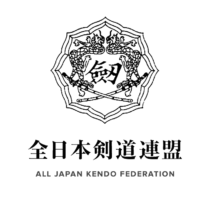Iaido means:
Iai: encountering the opponent in various unexpected situations.
‘Do’: Spiritual Way in Japanese Philosophy. The way of unification of the body and spirit.
Iaido allows for a way of life that teaches you to adapt to a variety of conflicting situations and enables you to develop your own soul. It used to be called “saya no uchi”, which directly means being invincible.
Since Iaido is practiced with a weapon, the training is based on kata (set form). Each form represents a different combat scenario. By practicing in a repetitive manner the practitioner learns and develops techniques. These techniques are highly refined, simple and direct. A beginner’s performance reveals a lack of control and rigidity while a master’s appear effortless and natural.
A Brief History of Iaido:
- In XIV. Century fencing schools are formed. In warfare, offensive and defensive techniques focused on batto and iai jutsu.
- From about XVI century right up until present day, much attention has been paid to the development of the “do”, which was then used for the development of the individual’s personality rather than the application of combat practices in everyday life.
- Hayashizaki Jinsuke Shigenobu (1542 – 1621) is the founder of iaido and Muso Jikiden Eishin Ryu. It is said that he reached the point of “enlightenment” on the top of a mountain by continually practicing and through meditation.
- Around 1600 CE, the age of peace (which lasted for 250 years) began in Japan, during which the jutsu (martial practice) was transformed to the “do” – form.
- Around 1700 CE, iaido was divided into two large branches: Tanimura Ha, which transformed into the branch of Muso Jikiden Eishin Ryu, and Shimomura Ha, from which the most well-known style is developed (Muso Shinden Ryu), taught by Nakayama Hakudo (1869 – 1958).
- The kata In 1967, the first seven forms of Seitei Iai Gata (# 1-7) were selected from various schools (ryu ha) under the auspices of the International Kendo Association. This has created consistency between different schools and a uniform examination system.
- In 1980, three new form exercises were added to the Seitei Iai Gata (# 8 – 10).
- In 1996, Seitei Iai was renamed to Zen Nihon Kendo (Zen Ken Iai).
- In 2000, two new katas were added (# 11, Sougiri; # 12,Nukiuchi).







